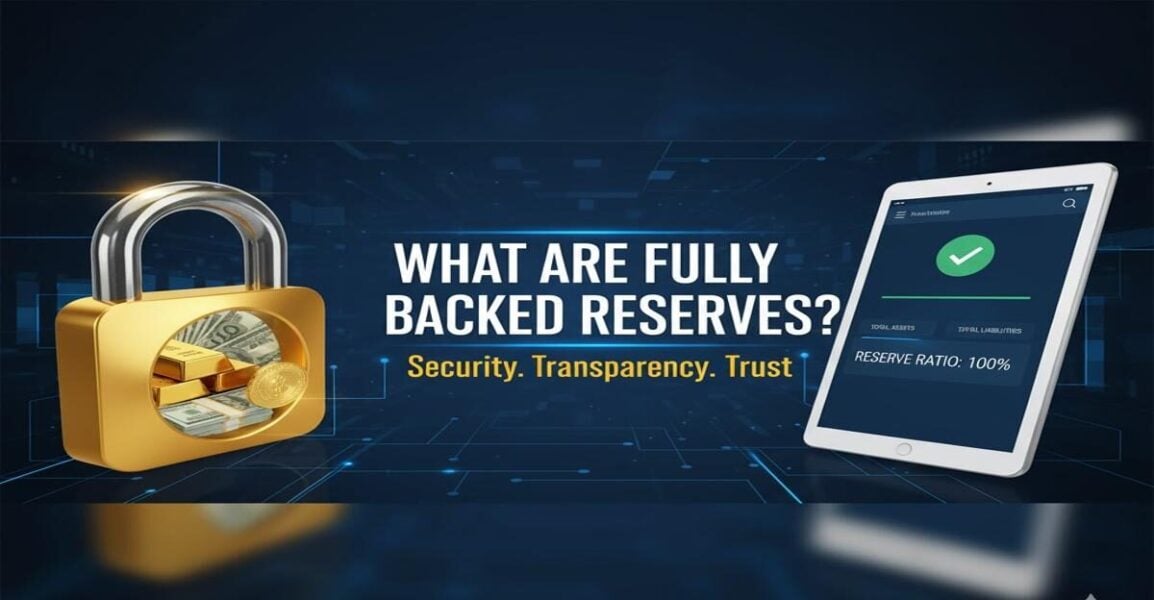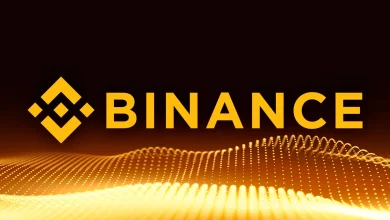What are Fully Backed Reserves?


In the finance space, reserves are funds or assets held by an institution to support its liabilities. It also refers to the money set aside to ensure it can meet redemptions, withdrawals, or obligations. Reserves are securety nets that assure investors or customers that their funds are secure and can be accessed when needed.
A fully backed reserve takes this idea further. It means that every unit of value, like a , bank deposit, or stablecoin, is supported by an equivalent amount of real assets. The concept of fully backed reserves represents the highest standard of financial banking, where every deposit is supported by an equivalent real-world asset.
In this article, you’ll learn how fully backed reserves work and why they play an essential role in today’s economy.
Key Takeaways
- Fully backed reserves guarantee that every issued deposit or token is completely supported by real, verifiable assets.
- This model reduces insolvency risks and prevents panic withdrawals because all funds are fully accessible.
- They create trust and stability by ensuring value remains constant even during market uncertainty or changes.
- While fully backed reserves come with high operational costs, they promote security, credibility, and financial transparency.
- Public reporting and transparent audits boost user confidence and make regulation easier to achieve and maintain.
Understanding What “Fully Backed” Really Means?
The term “fully backed” means that each unit of value issued by a digital asset provider or financial institution is supported by verifiable, tangible assets of equal value. Therefore, for every $1 in circulation, there’s $1 in reserve somewhere. It could be in the form of government securities, cash, or other low-risk assets.
If holders of that token or currency decide to redeem their funds, this approach ensures that the issuer has enough backing to cover every claim. Hence, fully backed reserves are usually described as a “one-to-one” model because the amount issued equals the amount held.
Benefits of Fully Backed Reserves
Fully backed reserves have many solid advantages that make financial systems trustworthy and securer.
1. Trust and transparency
With fully backed reserves, users can view that their money or tokens are backed by real assets. This assurance builds confidence because there’s no hidden risk. What you own has actual value behind it. For instance, if a company claims to have $500 million in reserves for $500 million worth of coins, this can be verified through public reports or audits. This transparency encourages people to trust the company and continue using its services.
2. Confidence and stability in value
Since every unit is supported by a real asset, the value of the deposit or token is stable even when the market changes. This feature is very critical in crypto, where price volatility can scare users away. Fully backed reserves offer a sense of predictability and security that users appreciate.
3. Reduced risk of insolvency
In traditional banking, insolvency or “bank run” occurs when several people try to withdraw their money at once, and the bank doesn’t have enough to pay everyone. Fully backed reserves prevent this from happening because all the funds are available. If everyone decides to redeem their holdings at once, it’s possible because the assets are 100% available.
4. Stronger regulatory confidence
Financial regulators prefer systems that can be easily audited and transparent for all to view. Fully backed reserves meet that standard because each deposit or token is directly connected to a verifiable asset. Hence, companies can easily follow laws, gain licenses, and work with governments or banks. It also reassures the public that the system is well managed.
5. Enhanced long-term credibility
A financial platform or company that uses fully backed reserves earns a reputation for responsibility and honesty. This reputation attracts more partnerships, users, and investors because people stay with systems they can trust.
Limitations and Challenges of Fully Backed Reserves
While they sound ideal, fully backed reserves have real challenges, making them challenging to maintain in practice.
1. High operating costs
It is costly to maintain a fully backed reserve system because the company must keep enough assets or money to cover every deposit or token in circulation. Hence, the business can’t use the funds for profit-making activities like investments or loans. Instead, the money stays in reserve but does not earn anything.
2. Inefficient use of capital
Since all the funds must stay in reserve, the capital isn’t working actively to produce more value. In fractional systems, a chunk of reserves can be lent out to support loans and revive the economy. Fully backed systems lack that flexibility, making them less efficient from a financial perspective.
3. Heavy dependence on audits
People’s trust in fully backed reserves depends fully on reliable and regular audits. If the audits are inaccurate, delayed, and not publicly available, confidence can rapidly disappear. In the space, some companies have claimed full backing but failed to prove it. Therefore, the accuracy and honesty of audits are critical.
4. Accessibility and liquidity challenges
Even when assets are fully held, they may not all be in cash. Some reserves could be in short-term securities or government bonds. If many users want to withdraw funds instantly, converting the assets into liquid cash might take time. Hence, while the system is fully backed, access to funds can be delayed due to increased demand.
5. Limited flexibility in market conditions
Fully backed systems can struggle to adjust instantly, particularly in quick-changing markets. They might be unable to reallocate funds to leverage investment opportunities easily. Additionally, it might be challenging to respond to interest rate changes because the capital is locked in reserves. This limited flexibility can make them less adaptable and sluggisher than systems that have more freedom with their assets.
Conclusion – Building a Trustworthy Financial Ecosystem
represent one of the most dependable models in modern finance. They bring stability, transparency, and confidence by ensuring each issued deposit is supported by tangible assets. However, maintaining this approach can be expensive. Also, it limits how much institutions can grow or earn. As more people become receptive to decentralized finance and digital money, the concept of being fully backed will remain a standard for building honest systems.







